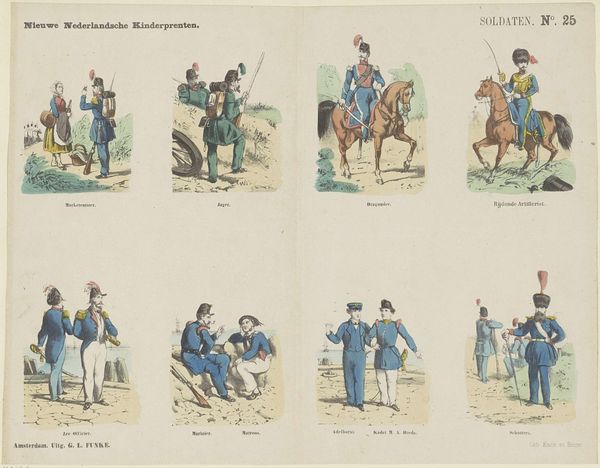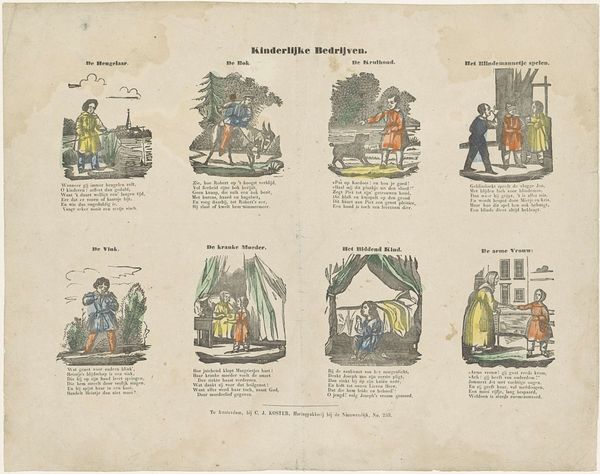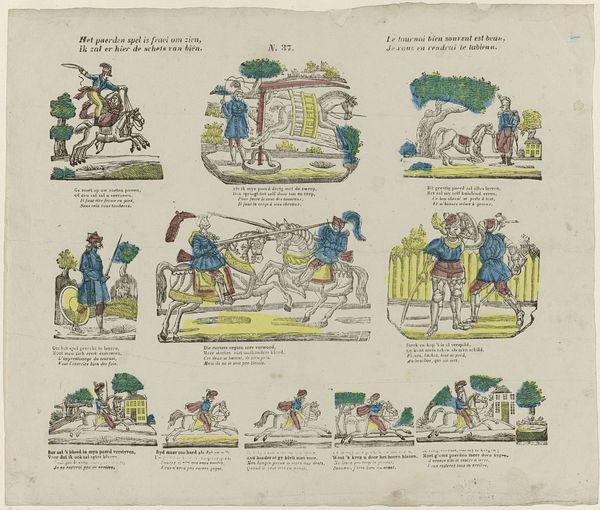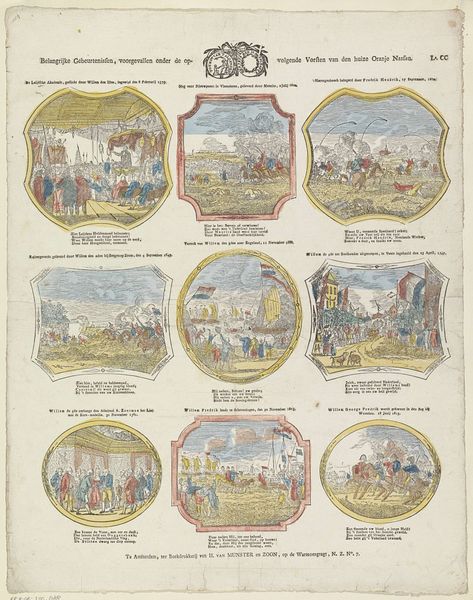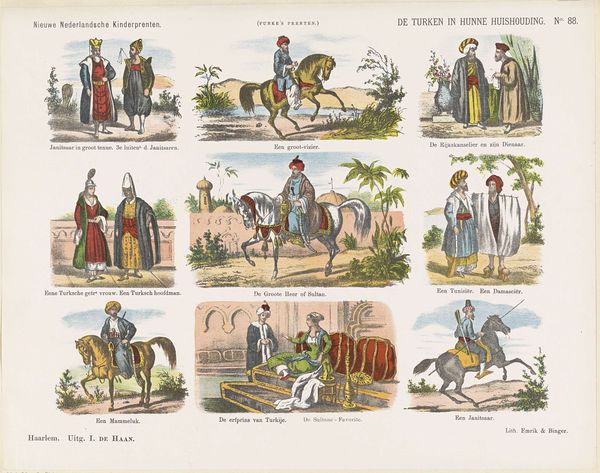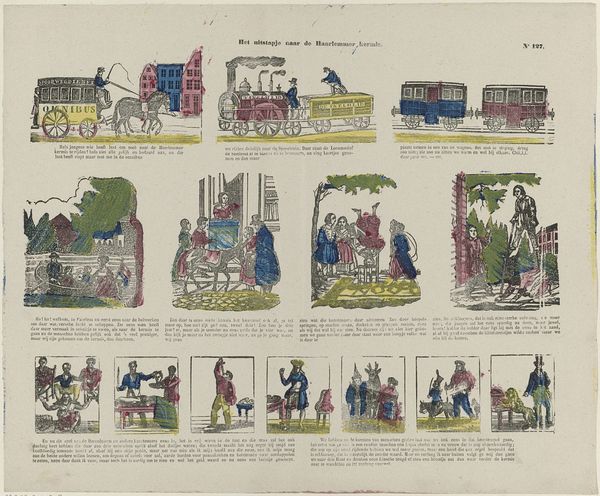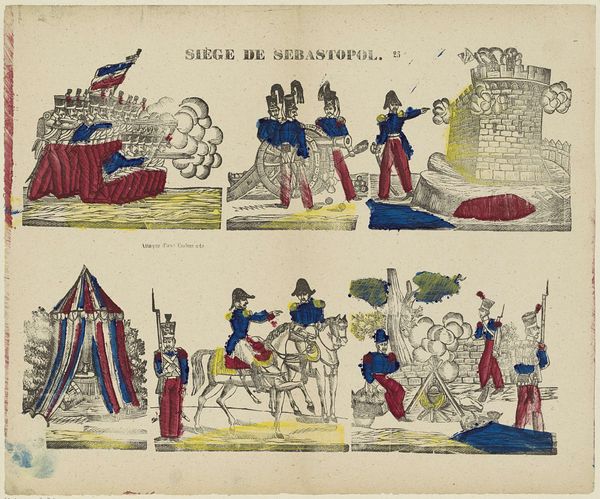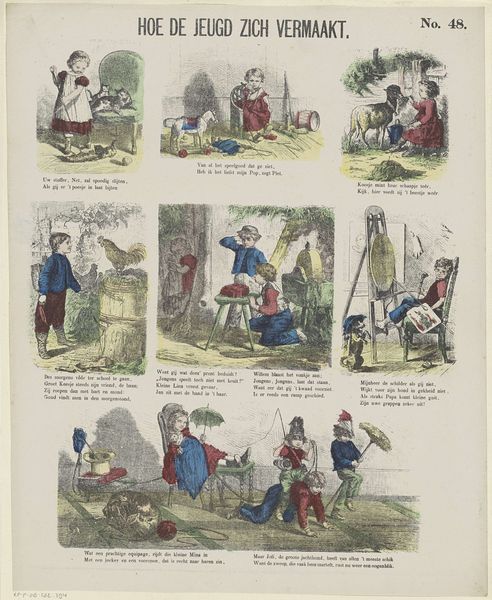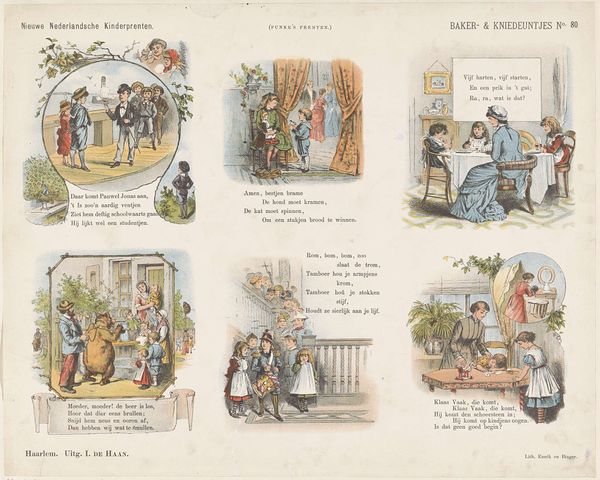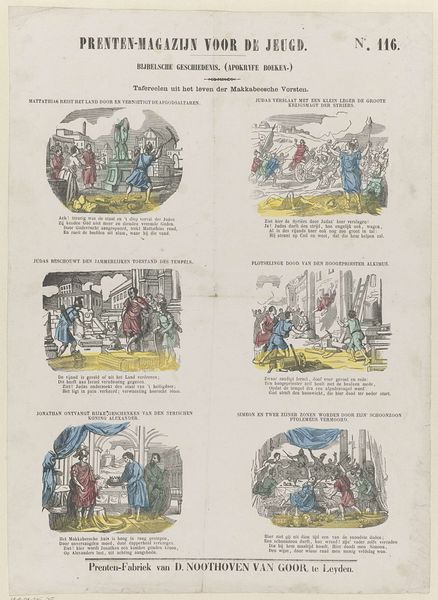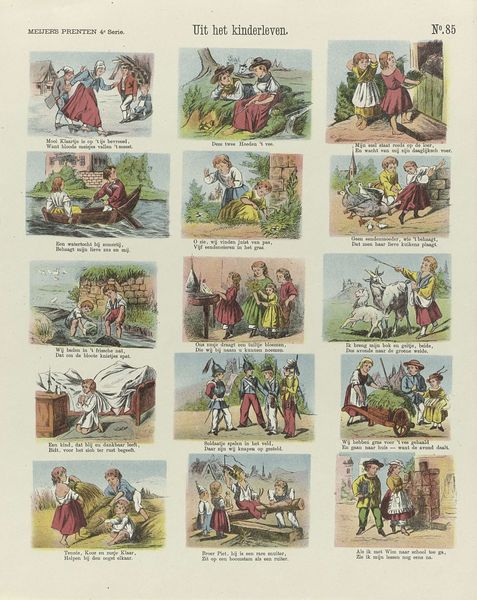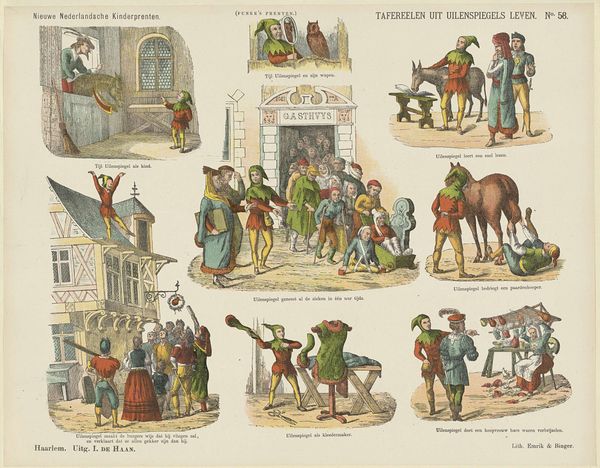
lithograph, print, watercolor
#
narrative-art
#
lithograph
# print
#
asian-art
#
watercolor
#
orientalism
#
watercolour illustration
#
genre-painting
Dimensions: height 345 mm, width 430 mm
Copyright: Rijks Museum: Open Domain
Curator: This print immediately strikes me as charming, if a bit exoticizing. The composition, divided into these neat vignettes, offers a sort of survey. Editor: This is “The Chinese in Their Household,” created sometime between 1865 and 1875 by George Lodewijk Funke. It's a lithograph, with added watercolor, characteristic of Orientalist works of the time. And you're right, the neat rows impose an order that reflects the colonial gaze. Curator: Exactly! What I find intriguing is how the printing process itself, the mass production of this image, allowed for the broad dissemination of these ideas about Chinese culture. Consider the division of labor involved: the artist, the lithographer, the colorists – all contributing to the construction of this visual narrative intended for the consumption of the Dutch public. Editor: From a formal point of view, observe how the composition guides the eye through each scene. The repeated use of horizontal lines and simple shapes, balanced with the pops of watercolor, creates a harmonious if simplified vision. The vignettes invite close readings, but also imply a unified perspective. Curator: It’s fascinating to think about the specific watercolors used. Were they readily available? Were they imported, adding to the complexity of global trade at the time? The material makeup of the print becomes an integral element in decoding the intent and consumption of the work. How much did the printing cost, and thus what were its audience demographics? Editor: True. However, within those constraints, the use of color tells us about visual encoding and aesthetics of difference. The palette seems deliberately chosen to highlight difference and reinforce otherness. This is visible particularly in the clothing. It invites contemplation regarding the artistic license that reinforces these imagined representations. Curator: Looking closer, the subtle textures achieved through the lithographic process offer an interesting contrast to the flat washes of watercolor, emphasizing a dynamic interaction between machine-made and hand-finished elements. This duality perhaps reflects broader societal tensions between industrialization and tradition during the period it was created. Editor: Both voices create an interesting picture: that Funke’s print functions simultaneously as an artistic and socio-cultural object of great complexity.
Comments
No comments
Be the first to comment and join the conversation on the ultimate creative platform.


